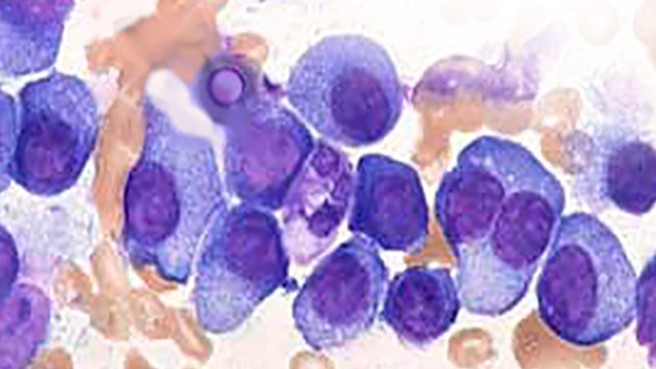Okay. Multiple Myeloma is a complicated blood cancer. The steps below are not easy. But the issues all are central to your MM care in the weeks, months and years to come.
More than 25 years of research and experience have taught me the blog posts linked below are central to how you, the newly diagnosed MM patient/survivor, thinks about his/her multiple myeloma diagnosis, conventionally speaking, in the weeks, months and years to come.

It might be a stretch to claim that the 10 posts below tell you everything you need to know about our rare, incurable blood cancer but I will say that you will learn A LOT about managing your multiple myeloma diagnosis by reading these 10 posts.
“Considering only FDA approved MM therapies represents short-term thinking. Newly diagnosed multiple myeloma patients are put at a huge disadvantage if they think short-term…”
“How Long Can a Person Live with Multiple Myeloma? Statistics are 5-7 years with an average five year survival of 51%. I say statistics are nonsense…”
“Do you try to cure your incurable blood cancer? What is your oncologist’s definition of cure anyway?”
Although not often openly acknowledged, “cure vs control” is the dominant philosophical difference behind many of the strategies, trials, and debates related to the management of myeloma.
You have been diagnosed with incurable cancer with an average survival, according to the American Cancer Society, of 5-7 years depending on the stage at diagnosis.Your challenge as a newly diagnosed myeloma patient is to weigh the pros and cons of cure vs. control of your disease. Is your multiple myeloma chemotherapy supposed to cure your MM or just control it?”
“If you have multiple myeloma your plasma cells produce unhealthy antibodies called monoclonal proteins (M proteins). The accumulation of M proteins in your body can damage organs like your kidneys and liver…”
“Whether or not every patient with multiple myeloma needs to be “pushed” into a strict complete remission (CR) was debated here at the Lymphoma and Myeloma meeting…”
“Two-thirds of HSCT survivors develop at least one chronic health condition; while a fifth develop severe or life-threatening conditions.”
““Serious adverse events were reported in 494 (45%) of 1097 patients receiving lenalidomide compared with 150 (17%) of 874 patients on observation…”
“At the time of interim data presentation, there was no difference in overall survival between the two arms…”
“Is death an adverse event aka side effect of multiple myeloma? I’ll admit that the studies linked below may be difficult for multiple myeloma (MM) patients to read. Learning about how end-stage multiple myeloma patients die can be hard to handle. I felt a bit overwhelmed myself when I first came upon the studies…
I am almost proud to tell everyone that I was told I was end stage. My oncologist told me that she “could do nothing more for me.” That appointment was in September of 1997. Needless to say, a lot has happened to me since that appointment.
- Conventional
- Non-conventional
- Complementary
- Alternative
I am not saying that there is a cure out there. I am saying that there is more to MM therapy than what your oncologist is offering.
If you have any questions, scroll down the page, post a question or comment and I will reply to you ASAP.
Good luck and hang in there,
David Emerson
- MM Survivor
- MM Cancer Coach
- Director The Galen Foundation
Recommended Reading:
“Cure or Control?
The cure-vs-control debate colors the approach to the treatment of smoldering (asymptomatic) disease, duration of therapy, choice of drugs, and many other clinical decisions in myeloma. It also substantially affects the interpretation of study results and the approach to the care of patients with myeloma.
So, should it be cure or control in myeloma? In the setting of designing and conducting clinical trials, both strategies should be explored simultaneously. Some patients desire a potentially curative approach and are not greatly concerned about the risk of adverse events, whereas others think quality of life is more important than overall survival and are unwilling to risk their quality of life for a potential cure.
Having clinical trials available to cater to both types of patients is important. For example, the Mayo Clinic myeloma group is currently pursuing an approach with single-agent lenalidomide as initial therapy for myeloma with other drugs added as needed, with an emphasis on quality of life and disease control. At the same time, we are testing a multidrug combination strategy with 4 active agents in the attempt to develop a curative “myeloma CHOP (cyclophosphamide-hydroxydaunomycin [doxoru-bicin]-vincristine [Oncovin]-prednisone)” regimen; the CHOP regimen has been used successfully to cure large cell lymphoma. Thankfully, many centers have a similar selection of trials targeting both options.
Outside of a clinical trial setting, I prefer disease control as the treatment goal, except in selected high-risk patients in whom an aggressive approach to achieving CR may be the only route to long-term survival.62–65 The disease control approach involves targeting very good partial response (minimal residual disease) rather than CR as a goal; using limited, less intense therapy first and moving to more aggressive approaches as need arises (sequential approach); allowing patients to help determine the timing and number of transplants (patient choice); and avoiding allogeneic transplant. Although cure is the ultimate goal of our long-term research, we need more data from randomized trials before resorting to highly intense therapy that is more toxic and unlikely to lead to a cure outside the setting of a clinical trial. On this one point, proponents of both cure and control can agree.”




